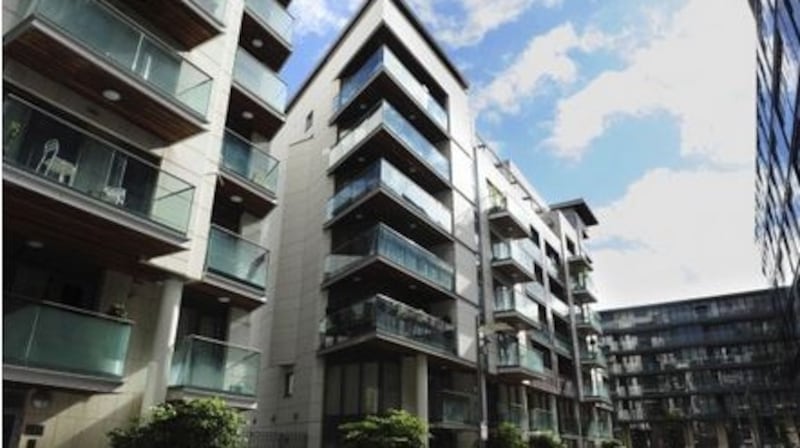With the new year now a week old and a raft of predictions and data on house prices, what can we expect in the residential market this year?
For those looking to get on the property ladder, there are some positive signals.
Property website Daft recorded house prices falling last year for the first time since 2012. The Daft report showed that the cost of the average housing unit at the end of December was €250,766, down 1.2 per cent on the start of the year.
There was a similar theme in a report by property website MyHome.ie, which is owned by The Irish Times.
Its report for the fourth quarter of 2019, compiled with stockbroker Davy, showed that the average selling price for a house in the Republic rose 0.72 per cent to €267,000 over the same period of a year earlier. That figure was down 0.45 per cent on the previous three-month period.
Good if you’re buying, bad if you’re trying to sell. Brexit uncertainty was partly to blame, while the Central Bank’s mortgage rules have kept a lid on lending.
It's clear that we're not building enough apartments, which is the only way we'll ever catch up with demand in Dublin
The financial regulator recently estimated that house prices would have risen by another 26 per cent were it not for its macroprudential rules, which require first-time buyers to have a 10 per cent deposit and limit how much they can borrow to 3½ times their income.
Without doubt, the residential property market has slowed. A total of 54,963 sales were recorded on the official Residential Property Price Register last year – 2,239 fewer than in 2018. This is not good for either buyers or sellers.
Output rising
On a positive note, new housing output is rising. In 2018, some 17,995 new dwellings were completed with various forecasts for last year putting the figure at 21,000-plus (we won’t have the final number for a while yet).
The negative is that, according to the Central Bank, we need to build 34,000 new homes per annum out to 2030. The figure required could actually rise to 51,000 units if household formations were to move towards UK levels.
So each year we fall a little further behind in the race to catch up. And it’s clear that we’re not building enough apartments, which is the only way we’ll ever catch up with demand in Dublin.
One company that added significantly to the housing stock in 2019 was Irish-listed housebuilder Glenveagh Properties, which completed 844 unit sales during the year, generating revenue of €284 million.

The average selling price achieved by the company rose by a tasty 16 per cent to €332,000, reflecting “significant deliveries” from starter-home schemes and the sale of 90 units at Herbert Hill in Dundrum.
The Dundrum sale highlights the peculiar nature of the Irish housing market at present. Glenveagh sold the development – which is situated beside the Dundrum Town Centre – as a job lot to German investor Realis for €55 million. That equates to a healthy average price of €611,000 each.
In turn, Realis is reported to be planning a 25-year agreement with Dún Laoghaire-Rathdown County Council, which will pay up to €3,000 a month to rent these properties to accommodate people on its social housing list.
This would set a high benchmark for people trying to rent under their own steam in the area, who then struggle to save the deposit required by the Central Bank to buy a house, which would be cheaper for them financially than paying sky-high rents.
It has also taken 90 housing units (situated right beside the Luas green line) off the market for sale to young couples, who are crying out for well-located properties to purchase.
Such deals are becoming more and more commonplace in the Irish market, where funds are able to write large cheques to secure property for rent in prime locations.
It's hard to imagine builders pressing the button on new builds until they know the shape of the next government and their likely policies on property
In October last year, Realis agreed the forward purchase of the 56 apartments that Marlet Property Group is in the process of delivering at its Ropemaker Place scheme in Dublin's south docklands. These are likely to be rented to well-paid Googlers and Facebookers working in the area.
Rent cap
Estate agent Lisney published its outlook yesterday for the residential market, with its managing director Duncan Lyster predicting that price growth would be only "slightly positive" this year while rent prices are unlikely to exceed the rent pressure zone cap set by Government.
That cap is 4 per cent, which will be little comfort to those already paying through the nose to put a roof over their head. And the roof is probably draughty or leaky.
One element of uncertainty in the market will at least be removed when Boris Johnson finally "Gets Brexit done" at the end of the month but that might simply be replaced by concerns over a no-deal scenario for the trade talks that are due to be concluded with the European Union by the end of 2020.
The upcoming general election here is another possible fly in the ointment, with the potential for some politician or other to utter a throwaway comment on the housing crisis that could spook the market. It’s hard to imagine builders pressing the button on new builds until they know the shape of the next government and their likely policies on property.
In short, it’s likely to be another year of dysfunction in the Irish property market. Slightly less dysfunction than in 2019 perhaps, but dysfunction nonetheless. Happy new year.











